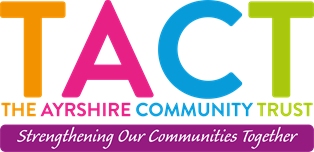The Agenda
An agenda lets everyone know what is going to be discussed at the meeting and in what order. Ideally it should be circulated in advance of the meeting. The agenda should be headed with the name of the group and give the time, date and place of the meeting. It may be useful to have a timetable for items, particularly if there is to be a guest speaker.
An agenda usually contains a number of standard items:
• Apologies for absence
• Minutes of the last meeting
• Matters arising from the previous meeting
• Chairperson’s report
• Correspondence
• Treasurer’s report
• Any other business
• Date, time and place of the next meeting
‘Minutes of the last meeting’ gives everyone a chance to check that an accurate record was taken of the previous meeting. The group should agree that the minutes are an accurate record and this would be minuted.
‘Matters Arising from the last meeting’ gives everyone a chance to check that decisions made last time have been acted on and feedback to the group can be given if the subject is not an agenda item.
‘Any other business’ gives anyone a chance to raise an issue which has not already been covered in the meeting which may be of interest to the group. If the group decides that a further discussion is required at the next meeting, the issue can be put on the next agenda as an item.
Minute Taking
Minutes are the official record of what took place at a meeting. They should record:
• The names of the people present (and apologies for those who let you know they would not be present)
• Information under each agenda item
• Decisions reached and action to be taken and by whom
The minutes should be distributed as soon as possible after the meeting so that people who agree to take action are reminded of what is required.
Minutes are also a way of letting people outside your group know what you are up to. It might be an idea to display a set of your group’s minutes on the notice board where you meet and/or community centre or your website etc.
Handy hints for minute takers:
• At the top of the minutes it should state the name of the group along with the date of the meeting.
• Minutes should be laid out according to the agenda, item by item
• You don’t need to record all the details of the discussions. A brief summing-up will do
• Record any important information given during the meeting and always be precise about money
• It is useful to have an action column down the right hand side of each page. There you can put the names of the people who have agreed to do something, alongside the decision they’ve agreed to carry out
Please see Example of Minutesfor further information on the layout.
Treasurers Report
It is important that the treasurer gives a report at each meeting so that everyone on the committee understands the current state of the finances.
Decisions about future spending can be taken more easily and more effectively if everyone is aware how much the group has. The committee should take responsibility for how money is spent and how much effort needs to go into fundraising.
Each year, at the Annual General Meeting (AGM) a full account of the years expenditure and income should be made available and reported on.
Each Treasurer’s report should contain:
• How much money the group had at the beginning of the period
• How much has been received
• How much has been spent (and on what)
• How much is left
How to write the report:
1. Use the bank statement to check balances
2. Look on the bank statement for all cheques written that month to see if they have been presented (cashed)
3. Check that all money paid in is shown on the bank statement
Please see link for more information on the role of the Treasurer
